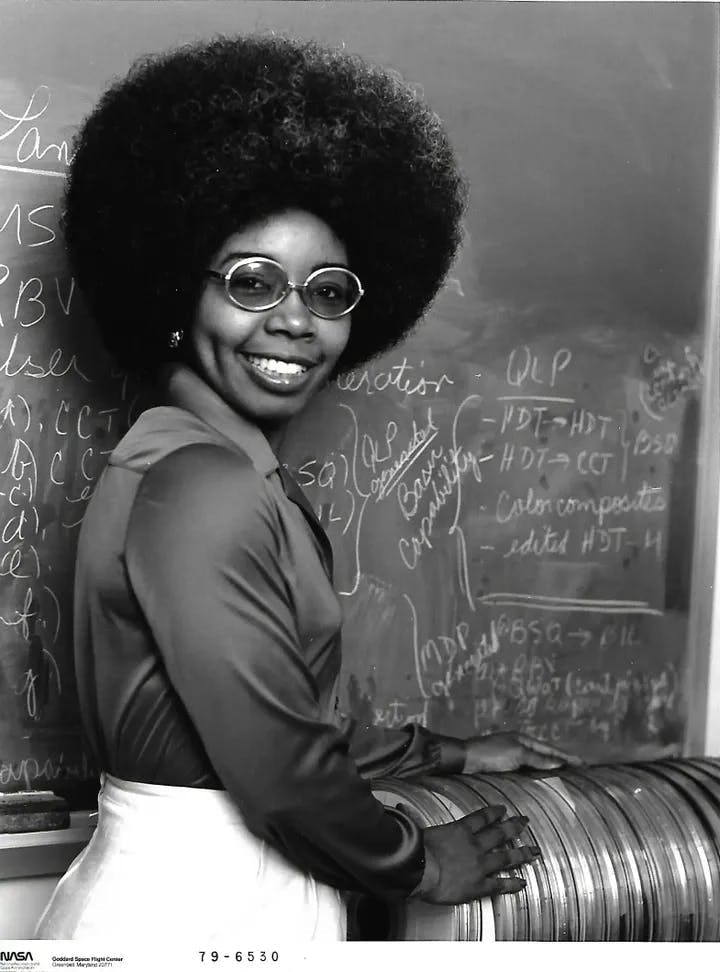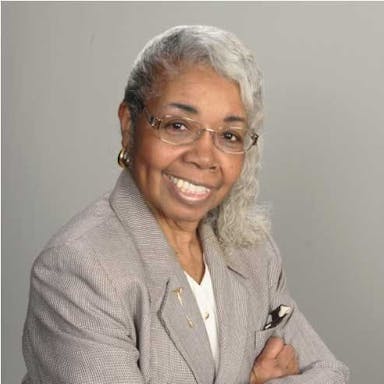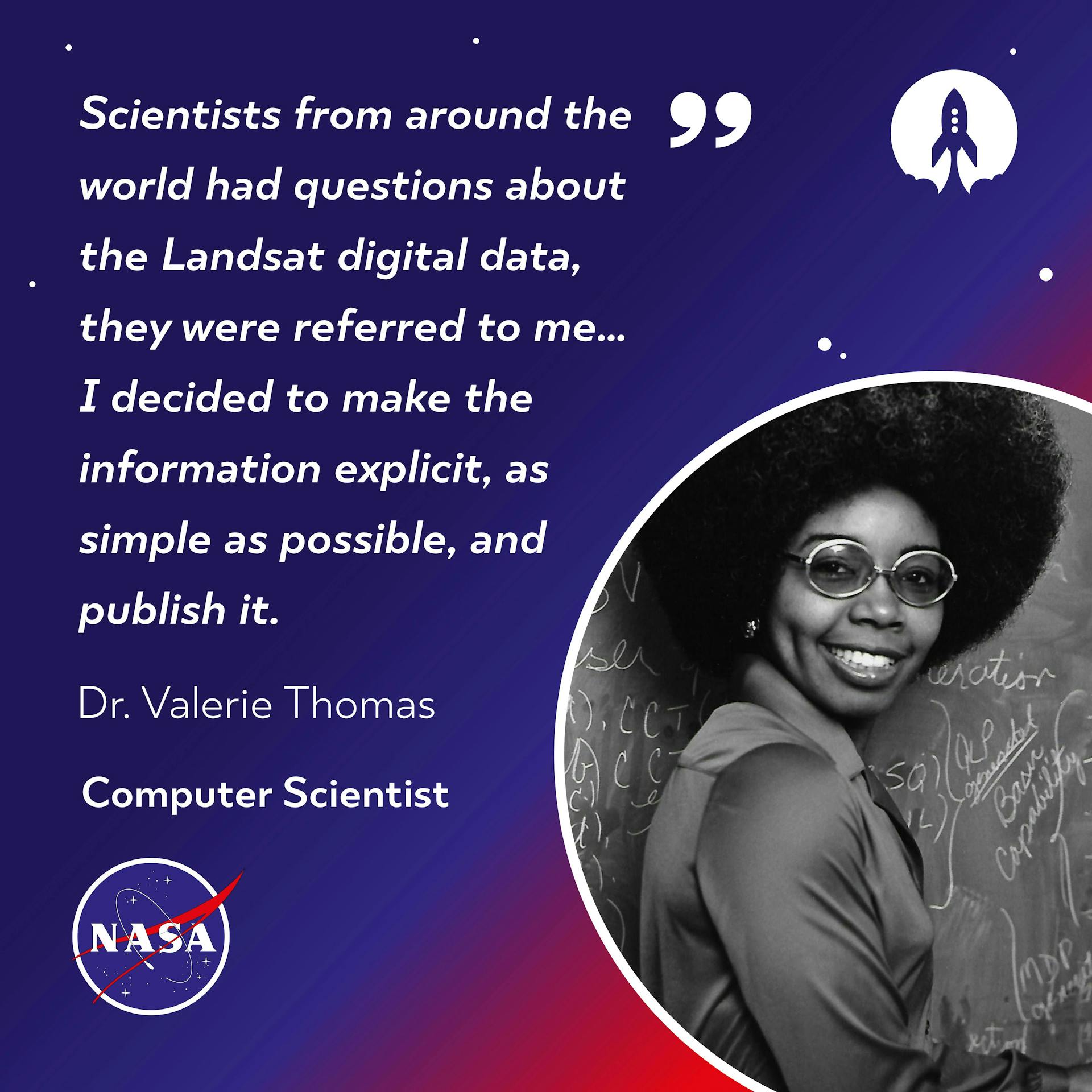Introducing Valerie Thomas - NASA success story

If you couldn’t already tell from our brand and ambition, Rocketmaker’s founders Richard and Keith were hugely inspired by NASA's values when setting up the company. In fact, the origin of the visual identity was to blend the professionalism, collaboration and ambition of the NASA space program with a tongue and cheek retro sci-fi style from the 1950’s.
This theme is incorporated into most aspects of Rocketmaker’s identity from our logo, to our merchandise and interactive app. For our new office, we even had two large work “pods,” decorated to appear like rocket stages named “Venture III”. And each Rocketmaker's employee is illustrated as a fictional crew member as part of their company on-boarding.
Rocketmakers is so inspired by the work of NASA yet many people know very little about the incredible women who played a pivotal part in its achievements. This International Women's Day, we thought we would introduce you to four women who played a crucial role in historic space expeditions.
Over the course of the week, each day we have been shining a light on different female figures who each played their unique part in NASA’s work.
You can read the first three instalments of the series here, here and here.

As a child, Valerie Thomas became fascinated with the mysteries of technology, tinkering with electronics with her father and reading books on electronics written for young boys. The likelihood of her enjoying a career in science seemed bleak, as her all-girls high school did not push her to take advanced science or math classes or encourage her in that direction. Nonetheless, her curiosity was piqued and upon her graduation from high school, she set out on the path to become a scientist.
Thomas enrolled at Morgan State University and performed exceedingly well as a student, graduating with a degree in physics (one of only two women in her class to do so). She accepted a position with NASA as a data analyst. After establishing herself within the agency, she was asked to manage the “Landsat” project, an image processing system that would allow a satellite to transmit images from space.
In 1976 Thomas attended a scientific seminar where she viewed an exhibit demonstrating an illusion. The exhibit used concave mirrors to fool the viewer into believing that a light bulb was glowing even after it had been unscrewed from its socket. Thomas was fascinated by what she saw, and imagined the opportunities for creating illusions in this manner as a scientific tool for NASA and its image delivery system.

In 1977 she began experimenting with flat mirrors and concave mirrors. The use of a concave mirror provides the illusion that an object exists in a three-dimensional manner. Thomas believed that images, presented in this way could provide a more accurate, if not more interesting, manner of representing video data. Thomas applied for a patent for her process in 1978, this led to the development of the Illusion Transmitter which enabled users to render three-dimensional illusions in real-time.
Since her work at NASA, Thomas has actively supported women working in STEM and continues to teach and participate in STEM programmes.
To celebrate International Women’s Day, we have been putting a spotlight on four of NASA’s most successful women. You can view the full series on our blog.
First image credit: NASA Second image credit: Galaxy City
At Rocketmakers we leverage our experience to build innovative software for companies of all sizes. If you have a vision for a project and you need a technical partner to help you design, develop and deploy it, get in touch: firstcontact@rocketmakers.com



